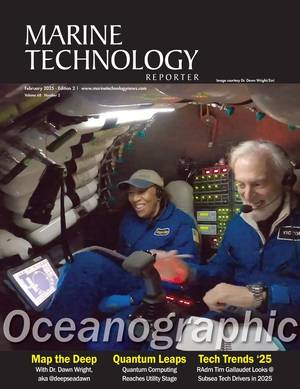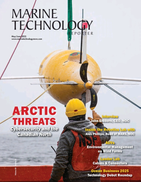
Dancing Krill
penguins and for helping to sequester carbon deep in oceanic waters as their exoskeletons and poo sink to the seafloor.They are at risk from over-fishing, climate change and ocean acidification, and a new project to monitor their population from space was announced this week by researchers from University of Strathclyde, WWF and the British Antarctic Survey.The ability to do this was recently facilitated by the identification of the signal associated with the pigment that turns the krill red.It’s estimated that there could be up to 500 million tons of krill swimming (and mating) in the Southern Ocean
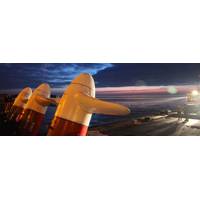
HydroWing Technololgy Works, says Dadd
6 of the UK government’s Contracts for Difference scheme and the company is now on course for deploying a 20MW tidal energy project at Morlais in Wales, in addition to other projects around the world.The hydrodynamic testing was conducted at the Kelvin Hydrodynamics Laboratory at the University of Strathclyde in Scotland. “The tests on the passive pitch technology have behaved exactly as calculated, validating the ‘proof of concept’," said George Dadd, Lead Turbine Engineer at HydroWing. "We will now continue the validation process with a full scale test
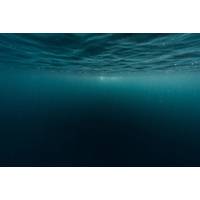
New Thermal Buoyancy Engine Design Proposed for Underwater Gliders
Researchers from University of Strathclyde, Tianjin University, and the Jiangsu University of Science and Technology have proposed a new thermal buoyancy engine design for underwater gliders used in oceanographic research.These gliders have engines that work by changing the buoyancy of the glider. The engine uses a phase change material to harvest thermal energy as the temperature of seawater drops from surface temperatures of around 20 to 30 °C to around 4 °C below 650 feet.The aim of the researchers' work was to achieve a higher energy yield than existing thermal buoyancy engines and

Subsea Infrastructure Power Looks at Renewables
. Image courtesy University of YorkRoboFishIt’s also supporting an underwater robotics project, RoboFish, that’s targeting offshore wind inspection work. This is a biomimetic AUV initially devised by researchers at the University of York, Department of Electrical Engineering, and the University of Strathclyde, Department of Naval Architecture, Ocean & Marine Engineering, with grant support from the EPSRC Supergen Offshore Renewable Energy Hub. Verlume is advising on the underwater power system for charging, as well as an integrated intelligent battery management system.“(Seabed residency)
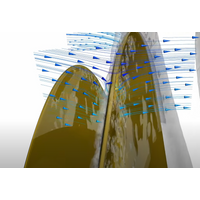
New System Reduces Underwater Radiated Noise from Ship Propellers
Oscar Propulsion Limited and the University of Strathclyde have come up with a way to reduce underwater radiated noise from ship propellers.According to Oscar Propulsion, its patented PressurePores system reduces propeller tip vortex cavitation by applying a small number of strategically placed holes in the propeller blades. The addition of these pressure-relieving holes allows ships to operate with a more silent propeller.Lars Eikeland, Marine Director, Oscar Propulsion, said, “Underwater radiated noise is one of the most adverse environmental by-products from commercial shipping, yet unlike

Havfram Subsea Names UK Managing Director
from naval architect through to commercial management. He joined Havfram (ex-Ocean Installer) in 2012, where until his recent promotion, he was Business Acquisition Director, driving forward their SURF and Renewables Business lines. He holds a BEng (Hons) in Naval Architecture from the University of Strathclyde.“I am looking forward to the challenge of leading the Havfram Subsea team in the UK as we move into the next stage of our company’s development, he said.We have an excellent track record for successfully delivering and supporting our clients’ projects. I am excited to
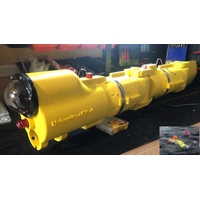
Robotic Fish Being Developed for Offshore Inspection in Hard-to-reach Spots
, named RoboFish, is made up of several self-contained modules with self-managed battery and actuator control for full-body, autonomous movement around underwater structures. RoboFish was initially devised by researchers at the University of York, Department of Electrical Engineering and the University of Strathclyde, Department of Naval Architecture, Ocean & Marine Engineering with grant support from the EPSRC Supergen Offshore Renewable Energy Hub," Verlume said.Credit: Verlume"With the limited accessibility, maneuverability and environmental impact of remotely operated vehicles (ROVs)
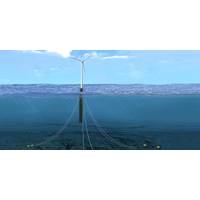
Fugro, Partners Design Mooring Line Fatigue Tracker for Floating Wind Turbines
Dutch offshore services company Fugro, in partnership with AS Mosley and the University of Strathclyde, has designed a real-time mooring line fatigue tracker for offshore floating wind turbines, minimizing the need for in-person inspections.The project has received innovation funding from the Scottish Government.The consortium won the funding to develop the tracker, which fuses the motion and position measurements of floating hulls with a simulation model to monitor fatigue, in March 2020 through the Floating Offshore Wind Technology Acceleration Competition (FLW TAC), which was run by the Carbon

New UK Center for Maritime Innovation
A consortium of British companies, academia and government formally established a new national center for maritime innovation and technology (MarRI-UK). The center, offering development opportunities for the UK’s $45B maritime sector, is based at the University of Strathclyde, with hubs to be announced across the UK. The center will provide a collaborative innovation vehicle to jointly tackle innovation and technology challenges.The first area of collaborative focus is Clean Maritime.MarRI-UK will focus on research and innovation within mid TRL (3 – 7) levels to address the
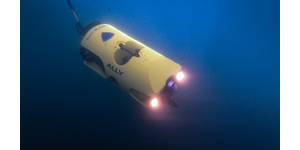
 February 2025
February 2025
